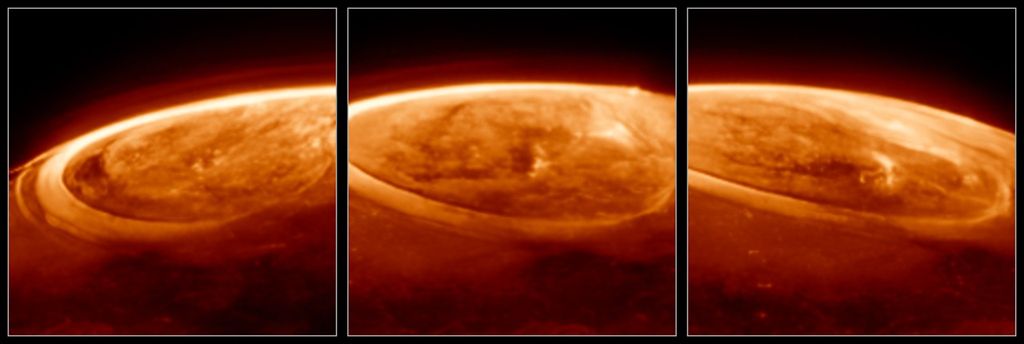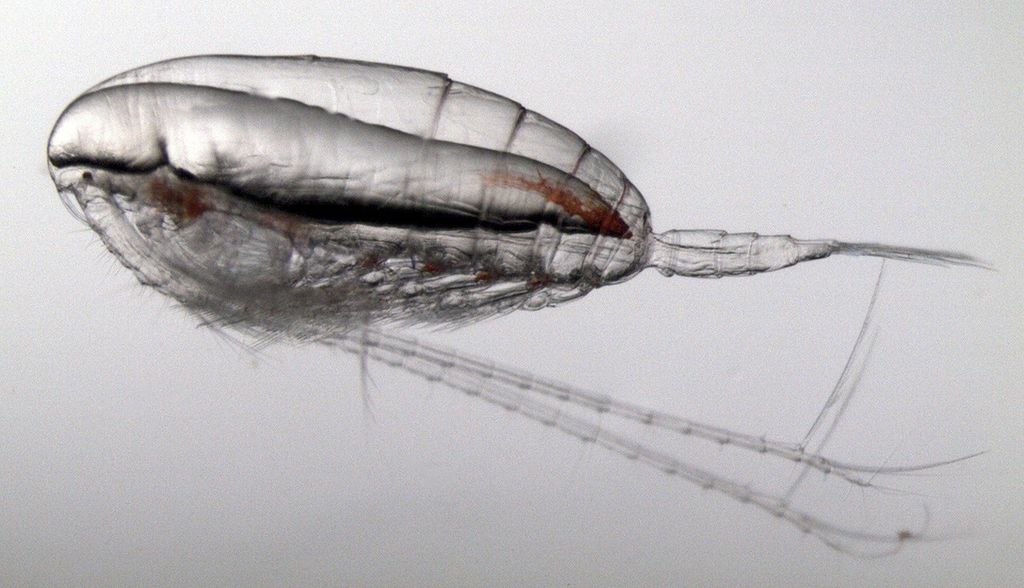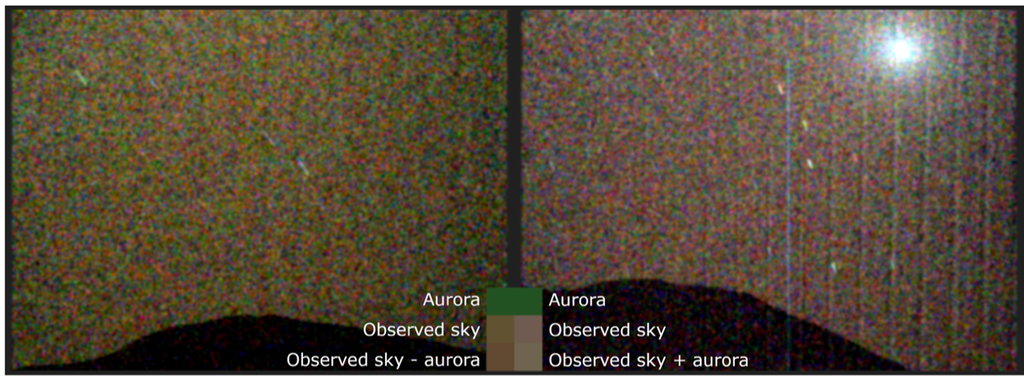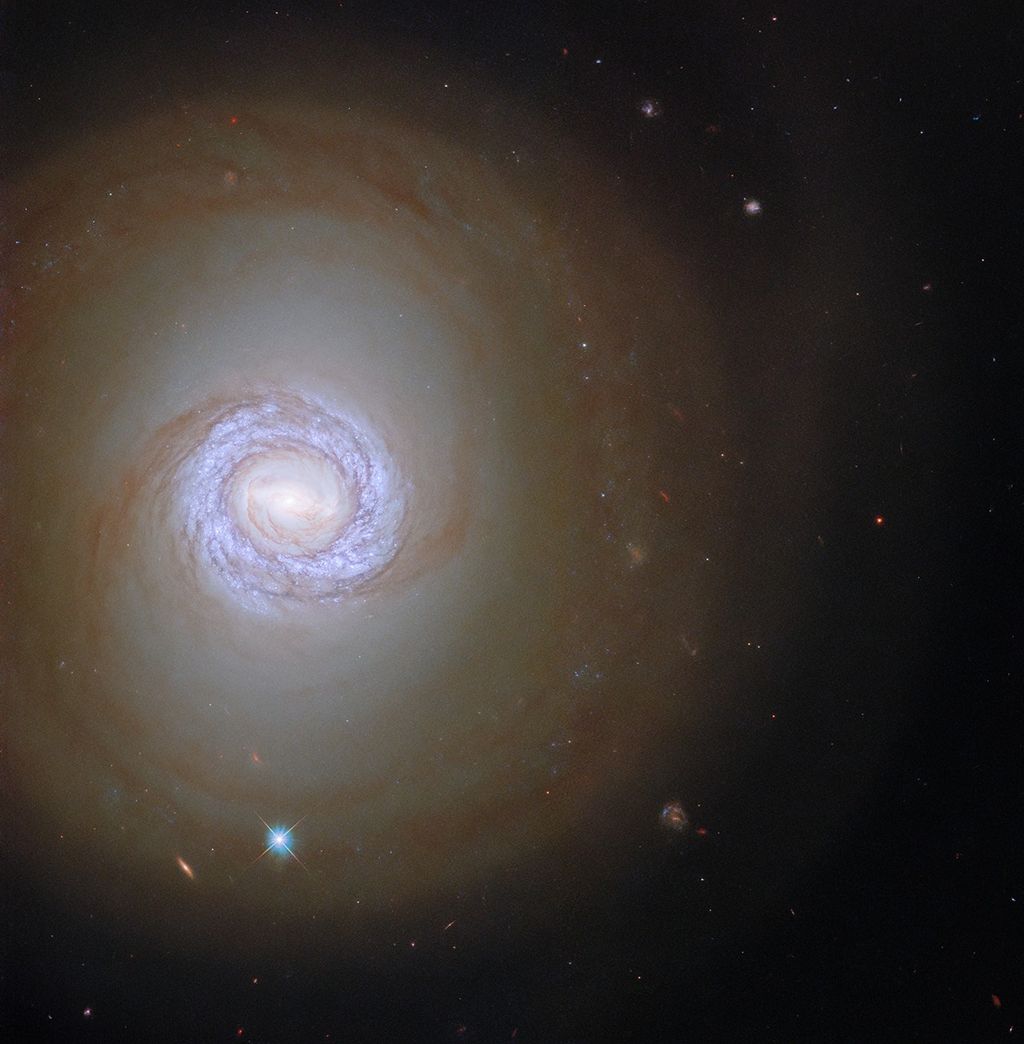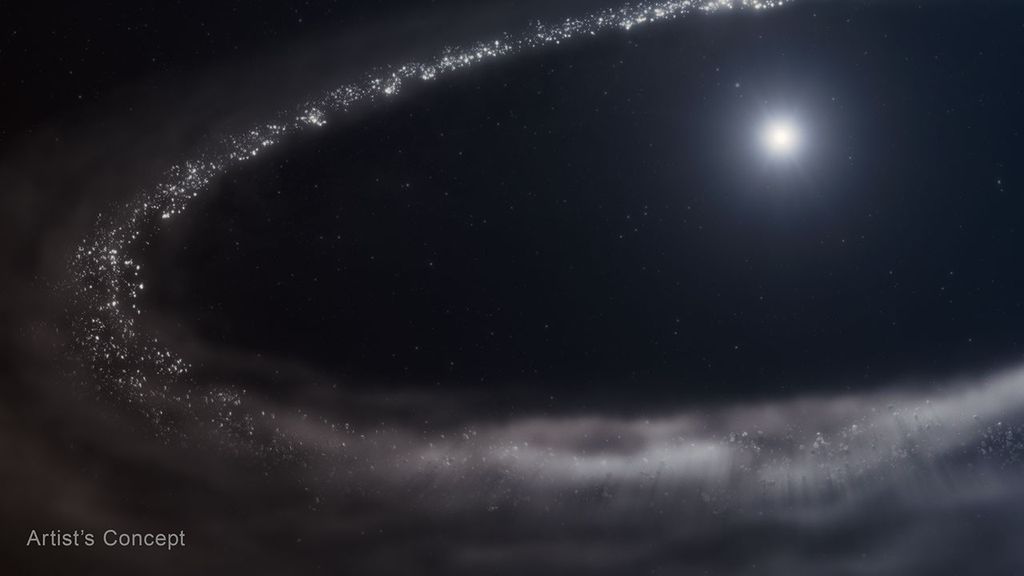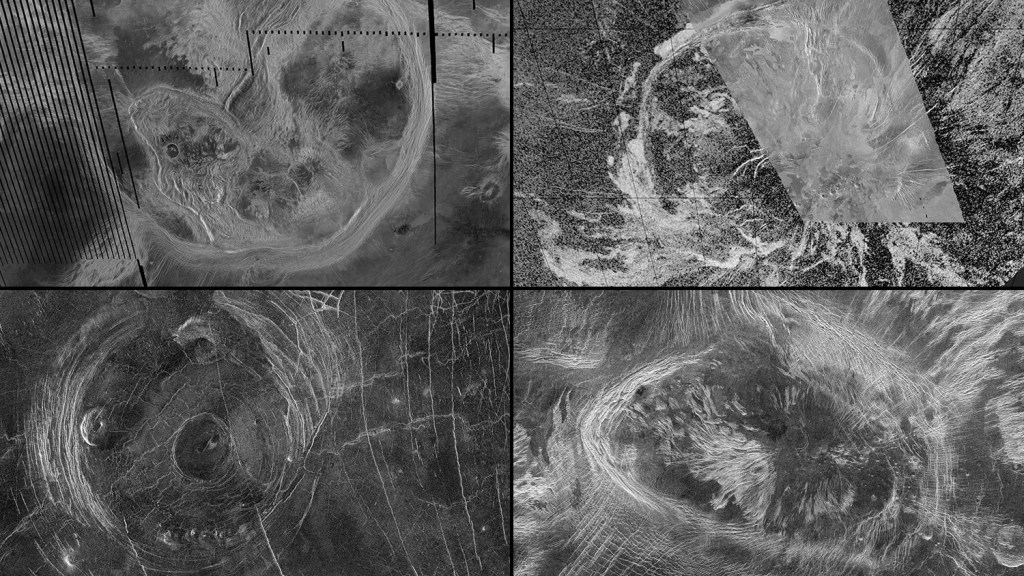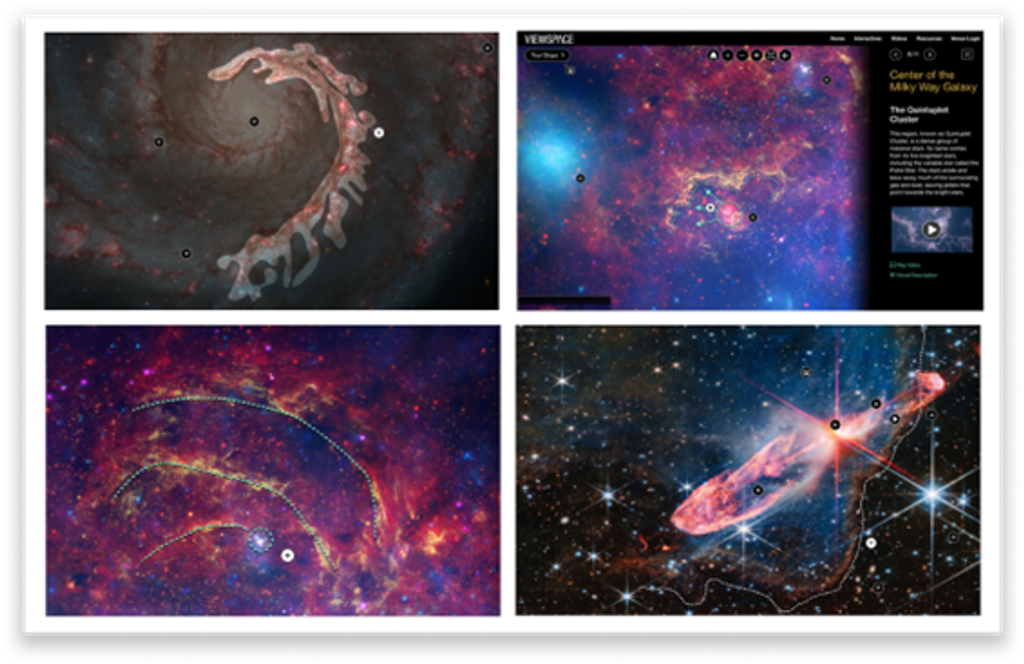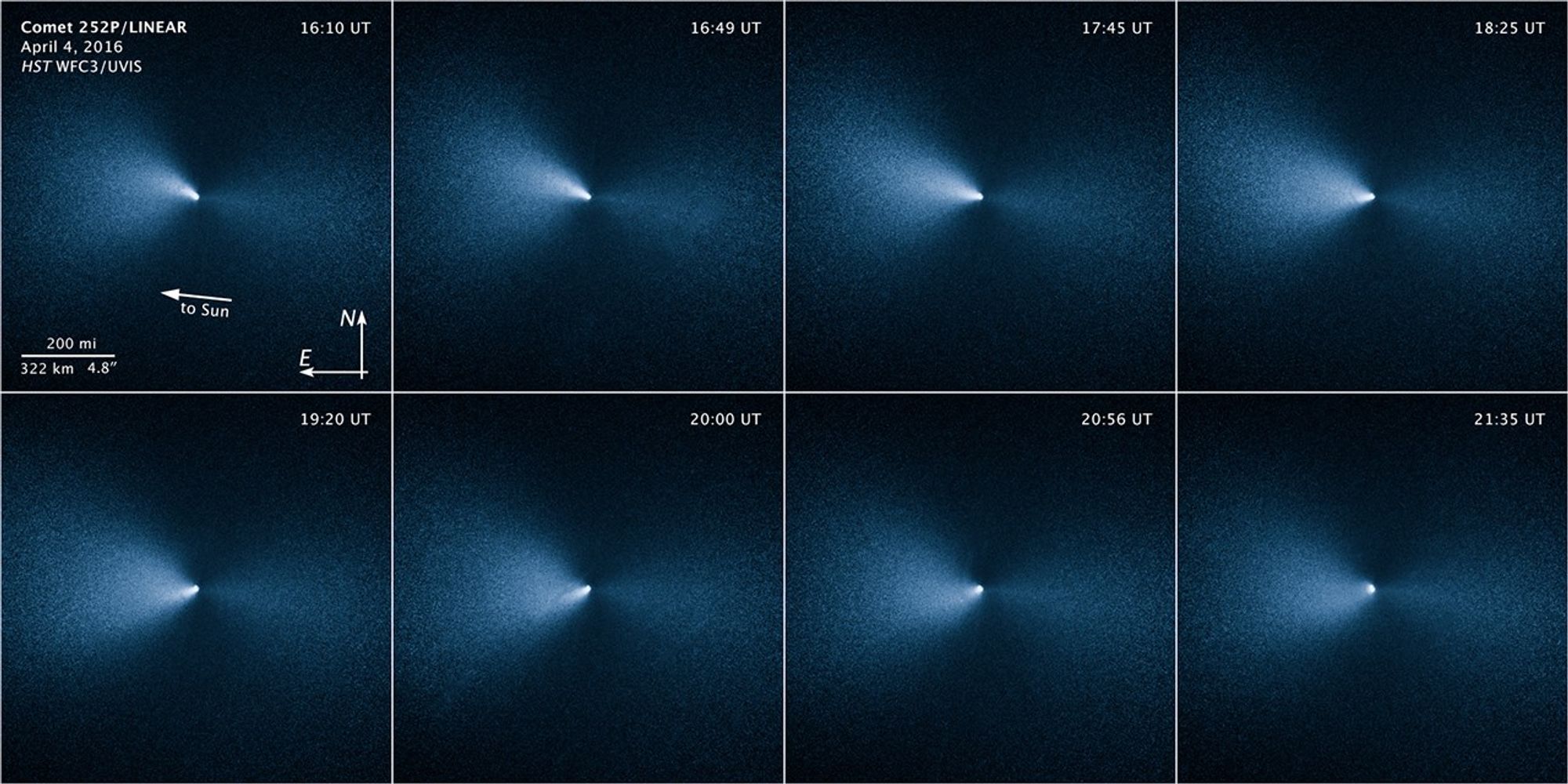1 min read
Comet 252P/LINEAR (April 4, 2016 – 16:10 UT)

About the Object
- DistanceDistanceThe physical distance from Earth to the astronomical object. Distances within our solar system are usually measured in Astronomical Units (AU). Distances between stars are usually measured in light-years. Interstellar distances can also be measured in parsecs.At the time of the Hubble observations on April 4, 2016, Comet 252P/LINEAR was 0.093 astronomical unit (8.6 million miles or 14 million kilometers) from Earth. The sun-comet distance on that date was 1.037 astronomical units (96 million miles or 155 million kilometers). At closest approach on March 21, 2016, the comet was 0.036 astronomical unit (3.3 million miles or 5.4 million kilometers) from Earth.
About the Data
- Data DescriptionData DescriptionProposal: A description of the observations, their scientific justification, and the links to the data available in the science archive.
Science Team: The astronomers who planned the observations and analyzed the data. "PI" refers to the Principal Investigator.The images were created from Hubble data from proposal 14103: J.-Y. Li and N. Samarasinha (Planetary Science Institute), M. Kelley (University of Maryland), M. Mutchler (STScI), and D. Farnocchia (Jet Propulsion Laboratory). - InstrumentInstrumentThe science instrument used to produce the data.HST>WFC3/UVIS
- Exposure DatesExposure DatesThe date(s) that the telescope made its observations and the total exposure time.April 4, 2016
- FiltersFiltersThe camera filters that were used in the science observations.F625W (SDSS r)
- Object NameObject NameA name or catalog number that astronomers use to identify an astronomical object.Comet 252P/LINEAR
- Object DescriptionObject DescriptionThe type of astronomical object.Comet
- Release DateMay 12, 2016
- Science ReleaseHubble Catches Views of a Jet Rotating with Comet 252P/LINEAR
- Credit

This image was originally black and white and recorded only overall brightness. These brightness values were translated into a range of bluish hues. Such color "maps" can be useful in helping to distinguish subtly varying brightness in an image.
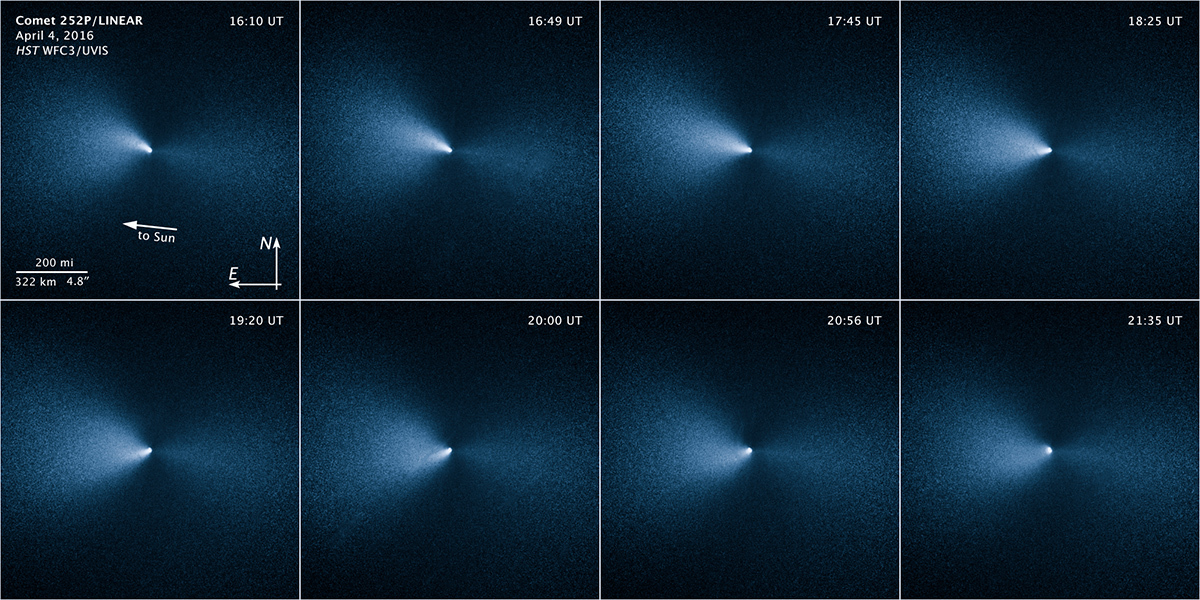
Related Images & Videos
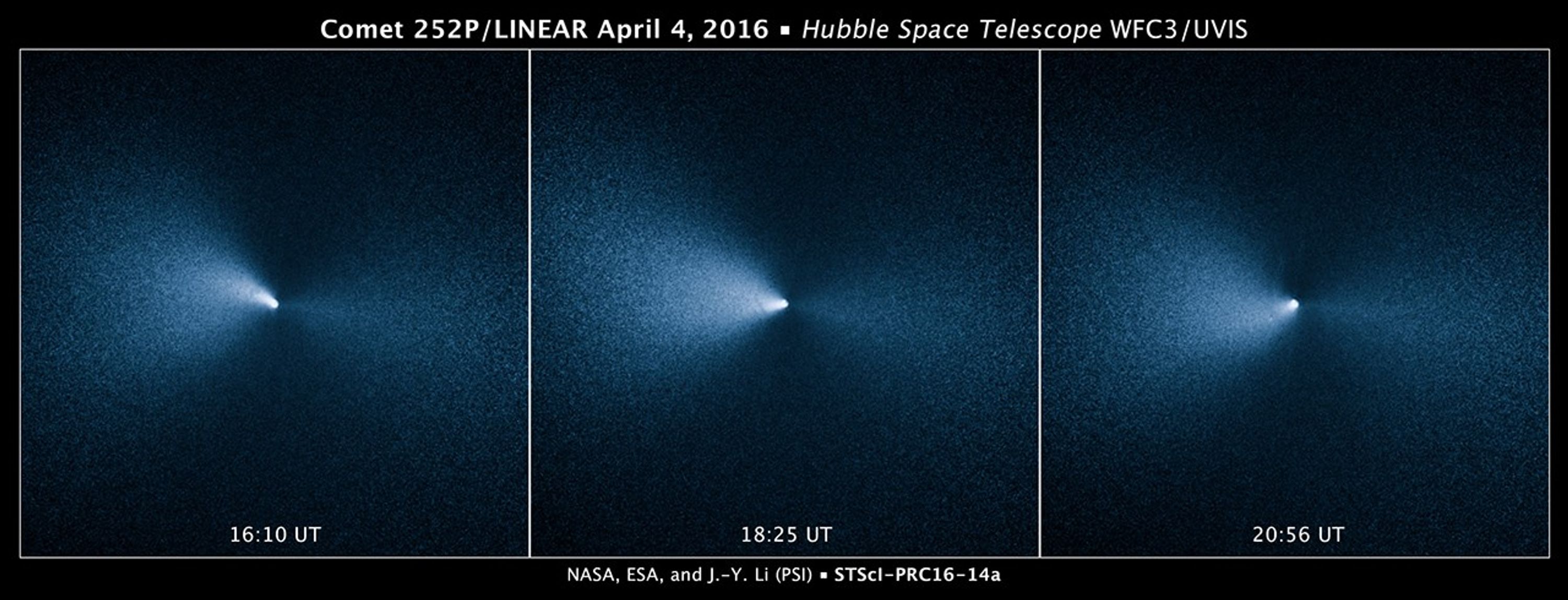
Comet 252P/LINEAR (April 4, 2016)
This sequence of images taken by NASA's Hubble Space Telescope shows Comet 252P/LINEAR as it passed by Earth. The visit was one of the closest encounters between a comet and our planet. The images were taken on April 4, 2016, roughly two weeks after the icy visitor made its...
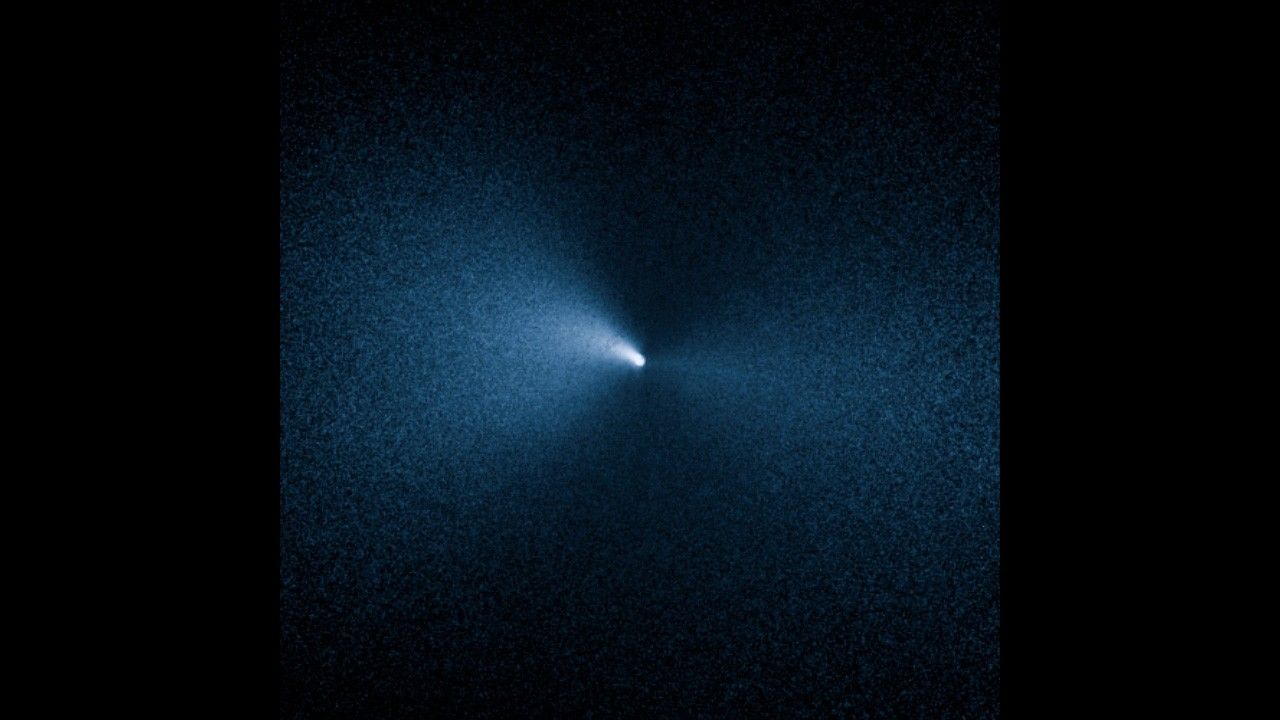
Time-Lapse Sequence Reveals a Jet Rotating with Comet 252P/LINEAR
This time-lapse movie, assembled from Hubble Space Telescope images, shows a narrow, well-defined jet of dust sweeping around with the rotation of Comet 252P/LINEAR like a spinning lawn sprinkler. The jet is illuminated by sunlight. Researchers made the movie from Hubble images...
Share
Details
Claire Andreoli
NASA’s Goddard Space Flight Center
Greenbelt, Maryland
claire.andreoli@nasa.gov




